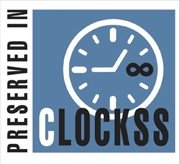Validation of a screening tool for developmental problems in children 60-71 months in Mexico
María S. Rodríguez-Trejo, Servicio de Pediatría del Desarrollo y la Conducta, Hospital Infantil de México Federico Gómez, Mexico City, Mexico
Antonio Rizzoli-Córdoba, Servicio de Pediatría del Desarrollo y la Conducta, Hospital Infantil de México Federico Gómez, Mexico City, Mexico
Laura A. Hernández-Trejo, Department of Clinical and Health Psychology Coordination, Facultad de Psicología, Universidad Nacional Autónoma de México, Mexico City, Mexico
Ilma R. Torres-Escobar, Servicio de Pediatría del Desarrollo y la Conducta, Hospital Infantil de México Federico Gómez, Mexico City, Mexico
Miguel A. Villasís-Keever, Unidad de Investigación en Análisis y Síntesis de la Evidencia, Hospital de Pediatría Centro Médico Nacional Siglo XXI, Instituto Mexicano del Seguro Social. Mexico City, Mexico
Background: Early childhood is a critical period for child development. The Child Development Evaluation Test (EDI in Spanish), developed and validated in Mexico, is a screening tool for developmental problems in children from 1 month to 4 years and 11 months. Objective: To validate group 15 of the EDI test for children aged 60-71 months, comparing sensitivity, specificity, positive predictive value (PPV), and negative predictive value (NPV) using the Battelle Developmental Inventory 2nd edition (BDI-2) in Spanish as the gold standard. Methods: A cross-sectional analytic study with 46 children aged 60-71 months was conducted at the Hospital Infantil de México Federico Gómez. Children were evaluated using group 15 of the EDI test and BDI-2. The sample was non-probabilistic by convenience. Diagnostic metrics and comparisons were performed globally and in the developmental domain. Results: The sensitivity and specificity of group 15 for the EDI test were 93.8% (95% confidence interval [CI]: 81.8%-100%) and 73.3% (95% CI: 57.5%-89.1%), respectively. The PPV was 65.2%, and the NPV 95.5%. The highest percentage of false negatives was in the cognitive domain, followed by the adaptive domain. Conclusion: In this first study, group 15 of the EDI test shows high sensitivity and NPV, allowing early detection in an age group previously not covered, thus facilitating interventions in this group.
Keywords: Child Development. Infant health. Child care. Early intervention.



